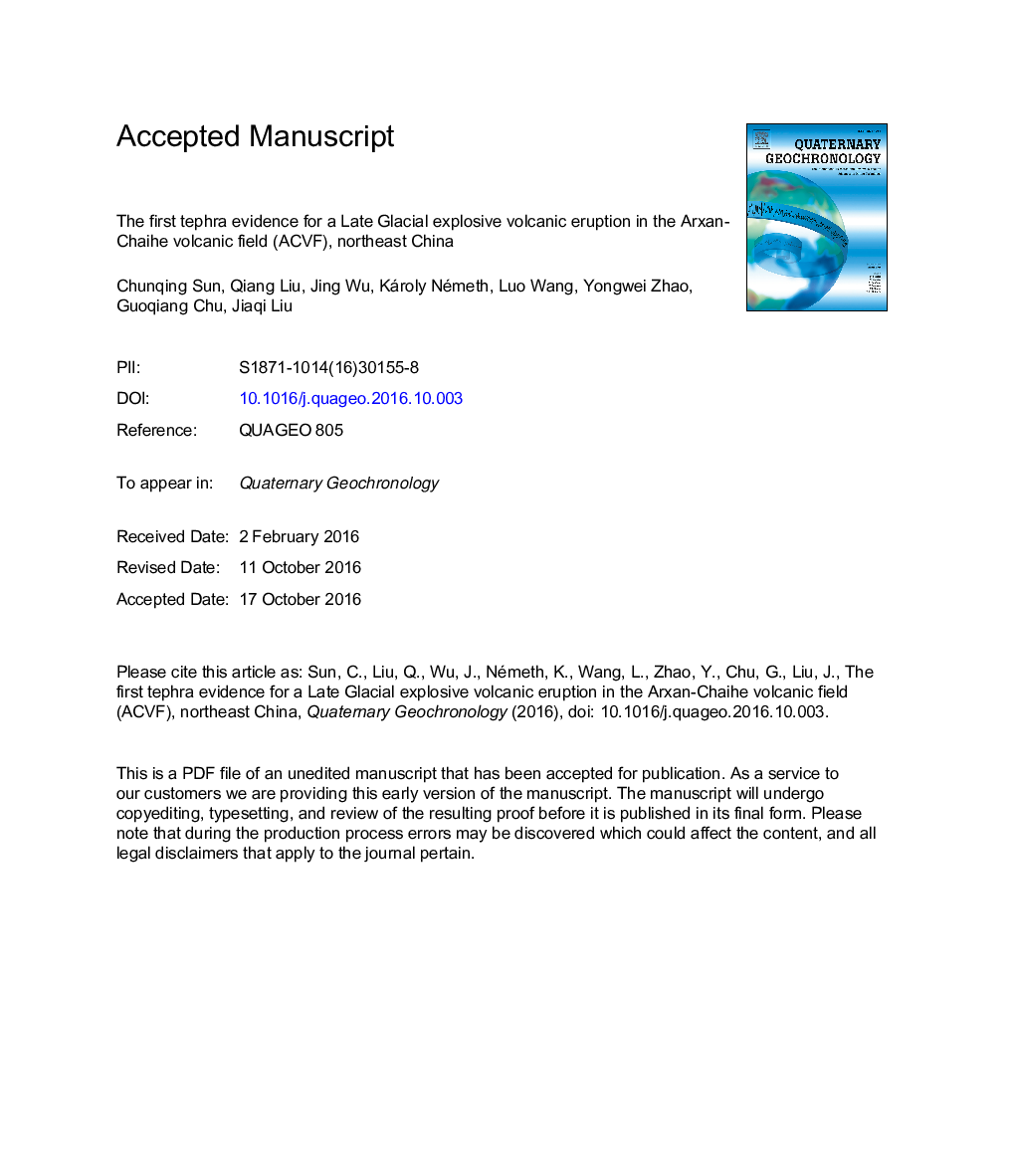| کد مقاله | کد نشریه | سال انتشار | مقاله انگلیسی | نسخه تمام متن |
|---|---|---|---|---|
| 5784982 | 1639836 | 2017 | 43 صفحه PDF | دانلود رایگان |
عنوان انگلیسی مقاله ISI
The first tephra evidence for a Late Glacial explosive volcanic eruption in the Arxan-Chaihe volcanic field (ACVF), northeast China
دانلود مقاله + سفارش ترجمه
دانلود مقاله ISI انگلیسی
رایگان برای ایرانیان
کلمات کلیدی
موضوعات مرتبط
مهندسی و علوم پایه
علوم زمین و سیارات
ژئوشیمی و پترولوژی
پیش نمایش صفحه اول مقاله

چکیده انگلیسی
A 5 mm thick tephra layer has been identified in the lacustrine sediments of Moon Lake in the Arxan-Chaihe volcanic field (ACVF) in Greater Khingan Mountains (NE China). The visible tephra layer is clearly revealed as a distinct peak in magnetic susceptibility measurements. The tephra layer consists mainly of brown vesicular glass shards and minor amounts of plagioclase, olivine and clinopyroxene. Major and minor element analysis has been carried out on the glass shards and plagioclase minerals. Glass shards show low concentrations of K2O, similar to the eruptive products derived from post-Miocene volcanoes of the ACVF. The plagioclase phenocrysts in both lava and tephra from ACVF, and in the tephra recorded in Moon Lake are labradorites. During the Late Pleistocene to Holocene, there were also extensive explosive eruptions in the nearby Nuominhe volcanic field (NVF). Volcanic rocks from the ACVF are easily distinguished from those derived from the NVF, having distinctly different K2O concentrations. This compositional variation is likely the result of different magmatic processes operating in the ACVF and NVF. Radiocarbon dating on organic materials from the lacustrine sediments dates the tephra layer to ca. 14,200 cal yrs BP, which implies that it was generated by a previously unknown Late Pleistocene explosive eruption in the ACVF. These results, for the first time, give a direct tephra record in this area, and suggest that identification of further tephra and/or cryptotephra in local sedimentary basins such as crater lakes of scoria cones and maars will be significant for dating the Late Pleistocene to Holocene volcanic eruptions and will help to establish a detailed record of the volcanic activity in the ACVF. The newly discovered tephra layer also provides a dated tephrochronological marker layer, which will in future studies provide a means to synchronise local sedimentary records of the climatically variable Late Glacial.
ناشر
Database: Elsevier - ScienceDirect (ساینس دایرکت)
Journal: Quaternary Geochronology - Volume 40, May 2017, Pages 109-119
Journal: Quaternary Geochronology - Volume 40, May 2017, Pages 109-119
نویسندگان
Chunqing Sun, Qiang Liu, Jing Wu, Károly Németh, Luo Wang, Yongwei Zhao, Guoqiang Chu, Jiaqi Liu,